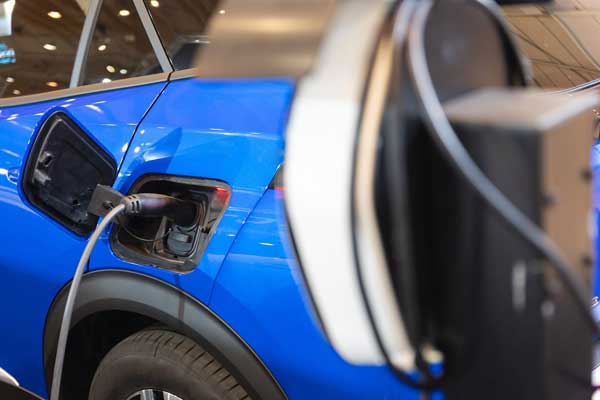Malaysia has set ambitious goals to reach net zero emissions by 2050. A crucial part of this journey involves transitioning its transport sector towards electric vehicles (EVs). Currently, over 26 million registered vehicles cruise Malaysia’s roads, with more than half being personal cars and vans. This puts the spotlight squarely on the transport industry, which accounts for a hefty 85% of the country’s overall transportation emissions – around 55 million tons of carbon dioxide each year.

Ramping Up EV Adoption in Malaysia
In recent years, Malaysia has introduced incentives and policies aimed at accelerating EV adoption nationwide. By 2030, the government wants EVs and hybrids to make up 20% of new car sales, rising to 50% by 2040. Its ultimate vision is for 80% fully electric vehicles on roads by 2050, with 90% manufactured locally.
To catalyze growth, Malaysia has attracted billions in EV investments from global auto giants like Tesla and Chinese manufacturers. Tesla is expanding charging infrastructure while exploring local battery production. Chinese automaker Geely has earmarked $6.5 billion to develop a regional EV hub, with plans to train 5,000 specialists within five years.
Leveraging these moves, national carmaker Proton expects to launch its debut EV model in 2025. Local firm Westar has also teamed up with Chinese company Maxus to focus on EV leasing. For such companies, tax deductions up to $64,000 help make EVs more viable. The government has also waived road taxes for EVs until end-2025 along with deploying more public charging solutions.
The Path to Becoming an EV Leader
Industry observers applaud the EV progress made but note Malaysia remains in the early adoption stage. Much rests on whether execution can match policy ambitions.
On the consumer side, EV options are expanding with dropping price tags. Incentives will likely broaden adoption, but capacity building also matters. Malaysia aims to have 10,000 chargers within two years to overcome range anxiety. But more public awareness is still needed on where and how to charge easily.
With strong government commitment and increasing consumer acceptance however, Malaysia appears headed firmly down the electric route.
Assessing the True Environmental Impact of EVs
While clearly producing less tailpipe emissions, EVs have a more nuanced sustainability footprint. Producing the lithium-ion batteries that power them generates more upstream carbon dioxide. On average, manufacturing a single EV battery generates between 2.5 to 16 metric tons of CO2. Hence, building a new EV currently yields around 80% higher emissions than conventional vehicles.
Innovations around battery chemistry and production methods can help. Malaysia recently opened the Heut pilot facility to pioneer more sustainable, energy-dense batteries. Alternatives like sodium and aluminum are being explored to replace rare earth components and their associated mining impacts.
Recycling EV batteries is another pivot point. As batteries remain expensive and heavy, recovery rates are still low. But recycled materials can potentially supply production of new vehicle batteries. Malaysia tries to provide more economic incentives around responsible battery disposal and recycling.
Powering the Charge Behind EVs
As EV adoption advances, power grid implications also matter. Malaysia’s grid is currently 40% coal-based, limiting potential emissions savings from switching to electric transport. But the government has scheduled phase outs, aiming for zero coal power by 2040.
By 2025, 31% of electricity should come from renewables like solar and wind, rising to 40% by 2035. These cleaner energy targets will slash overall EV emissions over time. Some charging stations in Malaysia are also integrating solar photovoltaics to directly tap renewable sources.
Winning Hearts, Minds and Wheels
Transitioning towards EVs involves more than environmental concerns or policy measures alone. Understanding what drivers want and addressing key concerns around switching to electric will likely accelerate mass adoption.
Globally, EV sales expanded 35% in 2022, capturing 18% of the passenger vehicle market. In Malaysia however, EV penetration still hovers around a modest 1-2%. But the signs look positive. EV purchases in Malaysia grew 10x year-on-year, with over 2,600 sold in 2022 compared to just 277 the previous year.
Test driving a modern EV reveals the unique experience they offer. Instant torque delivers punchy acceleration and nimble handling. Cabins are ultra-quiet without combustion engine noise. Regenerative braking takes some adaptation but adds to the futuristic feel. Touchscreens and smart controls reinforce the high-tech aesthetics.
For early EV owner Abdul Gafar, rational factors like lower fuel costs were key buying criteria. But he equally enjoys the intelligent cruise control and simplified footwork compared to manual gear shifting in traffic.
To encourage more drivers, EV prices require parity with petrol models, which local assembly and battery production can enable. Managing range anxiety fears by expanding charging infrastructure remains vital too, especially for frequent intercity travelers.
Simplifying public charging for first-time users also matters. Leveraging online communities helps spread awareness about EV ownership. Groups like the Malaysian Electric Vehicles Owners Club (MyEVOC) give potential adopters peer insights on available EV technologies and charging solutions nationwide.
Ultimately EV growth depends on addressing customer priorities as much as policy ambitions. With increased collaboration between government, industry and consumers, Malaysia appears steadily poised to hit the electric highway.
